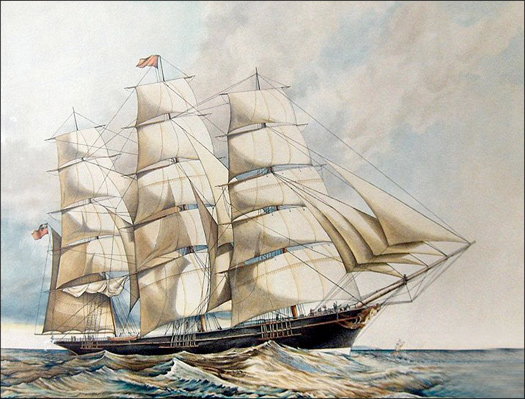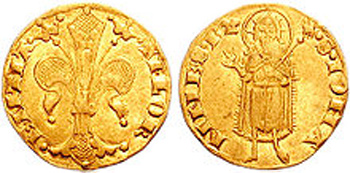
Source: M. Reilly.Clipper ship Thermopylae, Georges Jansoone , Wikimedia

Source: M. Reilly.Clipper ship Thermopylae, Georges Jansoone , Wikimedia
![]() Drag the following pictures to the appropriate place on the timeline.
Drag the following pictures to the appropriate place on the timeline.
The period from 1400 A.D. to 1780 A.D. is often referred to as the Commercial Revolution. Many advances in technology had lead Europeans to begin exploring new areas of the world. With this new era of exploration came an increase in global trade. One major problem stood in the way of growing trade: Money. In those days trade was conducted using gold and silver coins. Their value varied depending on the purity of the metal which made it difficult to know how much each coin was really worth. Have you ever seen a movie where someone bites into a gold coin and it bends? Why? Well, if the coin is pure gold, it should bend easily. If it is not pure (meaning it is fake), it will not bend. Have you ever had to bite into a coin to know if it is real? Why not? Because, we have a standard form of money. This means the government creates the money the same way, with the same value each time. In the 1200s A.D. the Italians began to mint money in this way, making each coin worth the same as the next. This encouraged trade in Italy and abroad.

Source: Fiorino 1347, Wikimedia